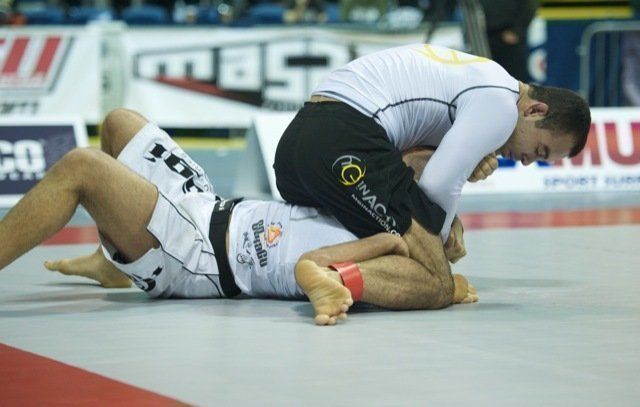Guest post by Evolve MMA, Asia’s premier championship brand for martial arts. It has the most number of World Champions on the planet. Named as the #1 ranked martial arts organization in Asia by CNN, Yahoo! Sports, FOX Sports, Evolve MMA is the best Singapore BJJ gym.
If you’ve trained Brazilian Jiu-Jitsu (BJJ), you’d certainly be familiar with the phrase “position before submission”. How could you not? It is one of the main tenets of Brazilian Jiu-Jitsu and a lesson worth repeating over and over, especially if you’re new to the martial art.
For the BJJ newbie, position before submission may sound like a completely alien concept. After all, they are led to believe that the ultimate way to finish a match is by submission. Although this is true, you’ll soon realize, especially after sparring for awhile, that successfully achieving a submission is only more probable after controlling your opponent properly, even if he sees it coming from a mile away.
Are you curious to know what it really means and wonder how to implement it in training? You’re in luck! Today, Evolve Daily shares Position Before Submission: 4 Things You Need To Know:
1) What does “position” really mean?
In Brazilian Jiu-jitsu, when we use the word “position”, it means static control of the upper torso of your opponent’s body. To control your opponent, you need to pin either his shoulders, back, or side to the ground using mount, side control, scarf hold or reverse scarf hold, knee on the belly, etc. After establishing these positions and securing them, it will be easier (and safer) to transition to a submission.
2) You must control your opponent every step of the way
Simply moving into a dominant position doesn’t necessarily lead to a submission. In fact, if you refuse to control your opponent every step of the way, up until you secure a submission, they might end up escaping altogether. One way to control your opponent is by putting pressure on them. Putting pressure on the right places, such as head and arm control in sidemount and placing your knee on your opponent’s solar plexus in knee on the belly, helps you secure your position. This helps you stabilize until you can finish the submission.
3) But going for submissions is more fun!
Have you ever watched a two equally skilled higher belts battle it out in the Mundials? If you’re looking for dozens of submission attempts, you won’t find it there. You’d most likely find them fighting for the dominant position. You can’t expect to finish a submission unless you are attacking from a dominant position. Thus, learning how to establish positions and controlling from there should take more precedence over learning fancy submissions.
We aren’t saying you should stop practicing your submissions, but you need to understand that you can’t properly submit your opponent unless you get a dominant position. Eventually, you’ll find that learning transitions and finding your way to achieving positional control is just as exciting as getting submissions.
4) You need to be patient
One of the biggest mistakes every BJJ newbie makes is that they simply lunge for a submission. Sure, you may know a few submissions and have a general idea about how to get there but you eventually end up losing the submission or get caught in one yourself. When you immediately go for the submission, you forget many important details along the way, and sometimes you may end up both losing the position and the opportunity for submission.
Although it may be tempting to go for a submission as soon as you see it, the chances of your opponent defending the submission are very high. Take your time when you control your opponent and make sure you have all your bases covered. Ensure that he has very little chance of escaping by adding pressure. When you’re sure he can’t defend or escape, you can move on to your chain of submissions.
Remember, the more you practice getting into a dominant position, the better your submissions will be. You’ll not only be able to finish your submissions with less back up moves, you’ll also be more aware of how to position your body in a way that is most advantageous for your game. So tell us, which of these tips will you try today?


















